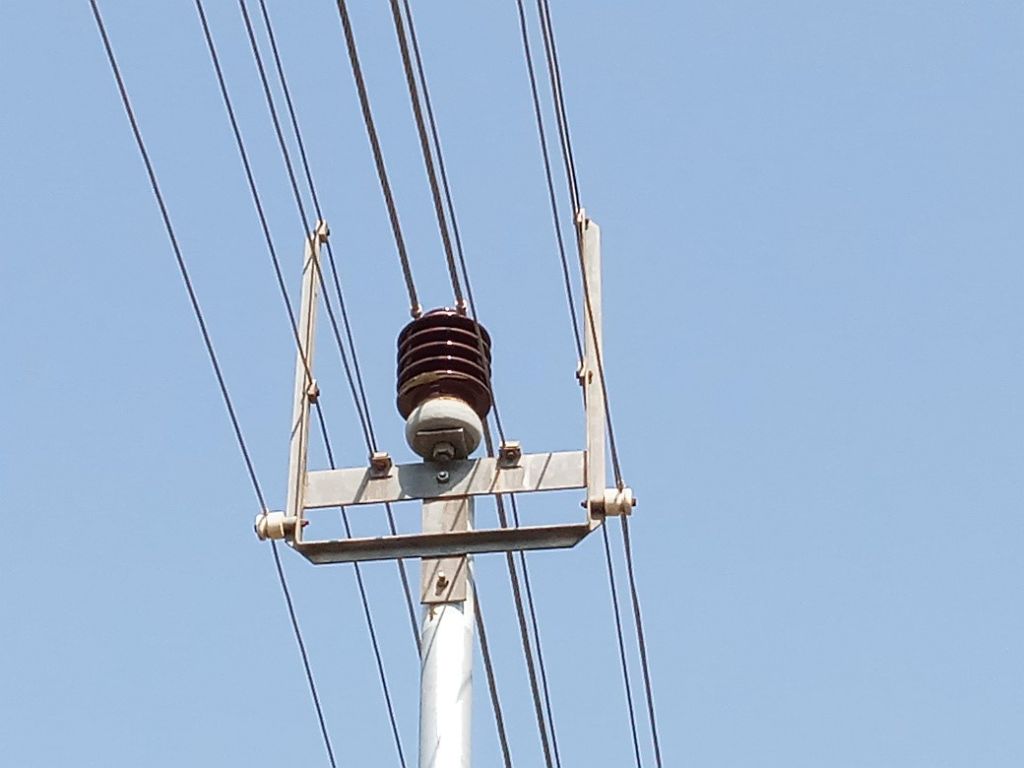It was warm enough this morning that I did not take my jacket to work with me.
Virginia washed sheets and rugs today. The sheets dried quickly, so she took them off the line and made the bed. Going back outside, she noticed some dark clouds moving in from the east and felt a few drops of rain, so she brought the rest of the items inside. A short time later the sun was shining again, so back outside with the laundry to finish drying.
First thing this morning, Salema brought me a transformer that we had shipped from Elkhart last year, He hadn’t been able to identify where it belonged, so I showed him what computer files (already stored in TWR Eswatini’s system) to use to determine the exact location(s) where that part (or any part for that matter) is used in the transmitter.
TWR headquarters has asked TWR Eswatini to determine the cost of installing solar power at the transmitter site and the anticipated savings in electricity. Tobi is concerned about the radio frequency ‘noise’ generated by the inverters used in a solar systems, so we talked about some of the problems and solutions. I also discussed with him the rate of return on investments for solar systems. TWR Benin uses diesel engines for power generation, so with the cost of fuel their return on investment is relatively quick. TWR Guam and TWR Bonaire buy power from their islands’ power companies, which is fairly expensive (also generated by diesel engines), so they have a similar time line for return on investment. TWR Guam is in the best position, because the power company is willing to buy back excess solar power (during daytime hours when the transmitters are off) at the same rate as they sell it. The Eswatini Electric Company has a hydro-electric power plant and buys electricity from South Africa’s coal-fired and nuclear power plants. The cost of electricity here is less than half the rate of the other TWR locations. It will be interesting to see the results of Tobi’s solar power study.
In the early 1980s, I designed a transmission line to carry the output of the 50,000-watt AM transmitter to its radiating tower. Knowing that our license allowed for up to a 250,000-watt AM transmitter, I designed it to be capable of handling the higher power level. When TWR West Africa installed their 100,000-watt AM transmitter, they used the same design and used it again for their second AM transmitter (capable of 200,000 watts). BTW, the Eswatini AM transmitter is now operating at 100,000 watts. On Friday, Mike Sabin, TWR Asia’s Director of Broadcast Operations, asked me about using the design in his region for a 200,000-watt AM transmitter. I assumed that my original drawings are located here at the TWR Eswatini transmitter site, but we (Tobi and I) were unsuccessful in our search for them today. Will need to ask Steve about them when he gets back from his vacation on Wednesday. In the meantime, I was able to provide Mike with a close up photo of the line and a written description of the materials used. If necessary, I can recreate the drawings to send to Mike.
One of the primary components of the transmission line is the line post insulator. In fact, the line was designed based on the dimensions of that particular insulator manufactured in South Africa. Therefore, I began a search to see if that insulator is still available. I eventually found the company, Cullin Africa Porcelain Division, but their website was down for maintenance. So the search went on until I found one of their catalogs on another website. From there, I determined the part number to be EP303. Using that information for a search, it appears that there may be another company, Yueqing Sarah Electric, in China making the exact same insulator. Their spec page looks exactly like Cullin’s catalog page!
Finally got around to photographing one of the amazing sunsets we see almost every evening around 6pm.




Bob says: Est 1kW per square mtr, noon sun
5kw incident/day
Cells 10% efficiency
Monocrystalline must track the sun, and fails under cloud cover.
Polycrystalline less efficient but no tracking, and works on cloudy days.